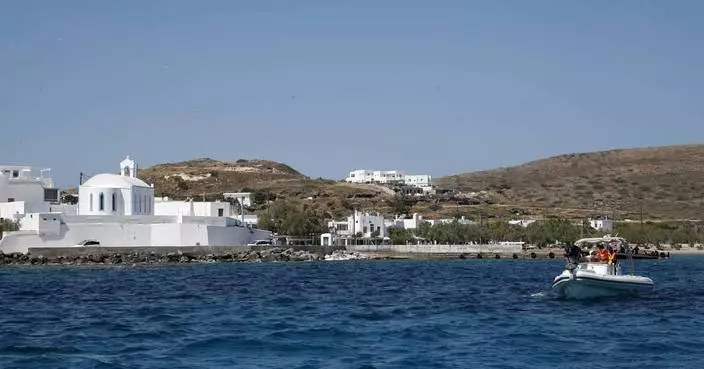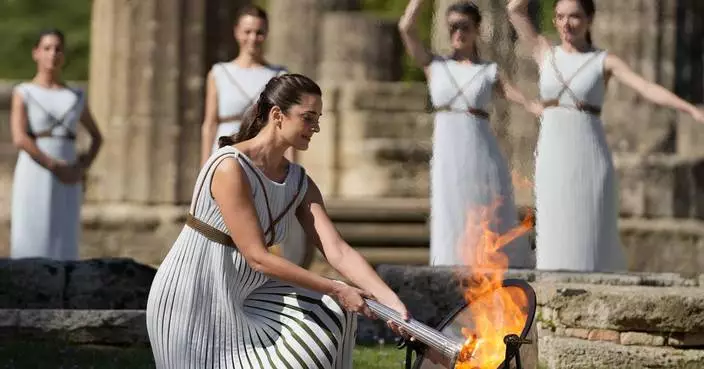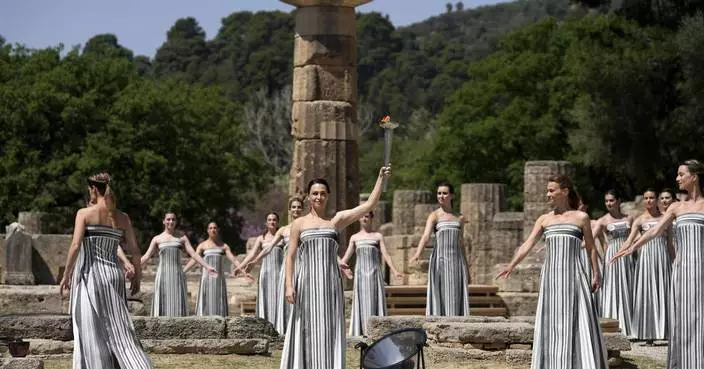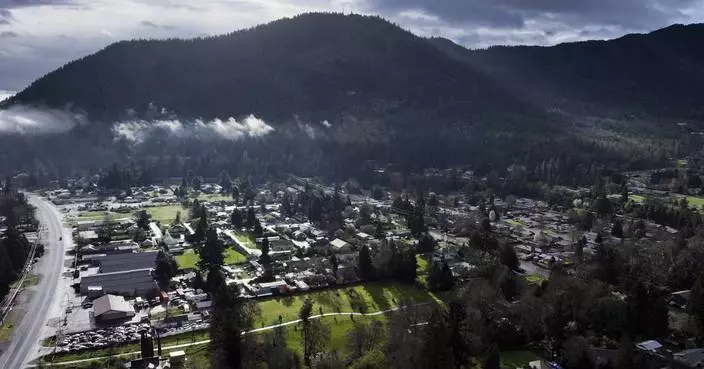Excavations next to the uninhabited Greek islet of Keros, already identified as the enigmatic hub of a forgotten religion, have now revealed traces of intense industrial activity more than 4,500 years ago, Greece's Culture Ministry said Wednesday.
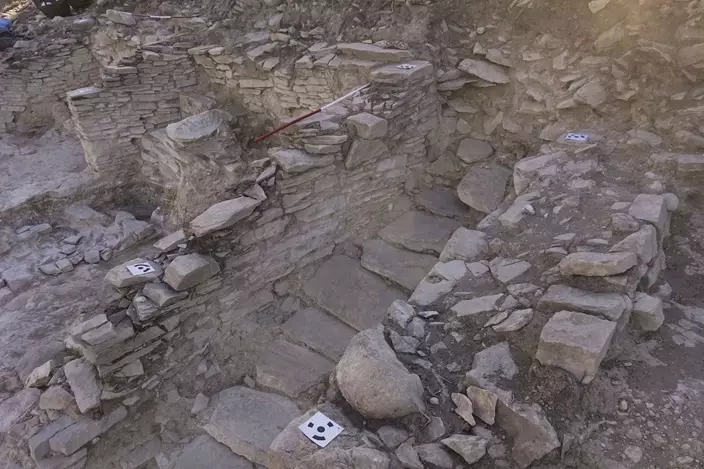
In this undated handout photo provided by the Greek Culture Ministry on Wednesday, Jan. 24, 2018, a stone staircase is seen in the lower terraces of Dhaskalio islet off Keros island in the Aegean Sea, Greece. (Greek Culture Ministry via AP)
Digs last summer showed that Dhaskalio, a rocky islet once joined to Keros, was once almost completely covered in unique monumental structures of gleaming white marble. It also had metal-working facilities and houses, with a sophisticated drainage system underneath.
Click to Gallery
Excavations next to the uninhabited Greek islet of Keros, already identified as the enigmatic hub of a forgotten religion, have now revealed traces of intense industrial activity more than 4,500 years ago, Greece's Culture Ministry said Wednesday.
Digs last summer showed that Dhaskalio, a rocky islet once joined to Keros, was once almost completely covered in unique monumental structures of gleaming white marble. It also had metal-working facilities and houses, with a sophisticated drainage system underneath.
"Almost every possible space on (Dhaskalio) was built on, giving the impression of a single large monument jutting out of the sea," the statement said, adding that the complex is the largest known at the time in the Cyclades island complex, which includes the top tourist destinations of Mykonos and Santorini.
"It seems to us that it is a central place to which people are drawn, to which expertise and resources are being brought and where activities like the metalworking ... are being centralized and controlled," he said.
Oddly, more than half the surviving Cycladic figurines have been found on desolate Keros. Excavators think they were brought from across the archipelago and ritually smashed on the islet, home at the time to about half a dozen tiny settlements, at a sanctuary just opposite Dhaskalio.
According to a ministry statement, Keros, between the bigger islands of Naxos and Amorgos, was one of the most impressive sites on the Aegean Sea in 3000-2000 B.C. — the dawn of Greek civilization.
The ministry said prehistoric builders created massive terrace walls that made the 1.3-hectare (3.21-acre) Dhaskalio look like a stepped pyramid.
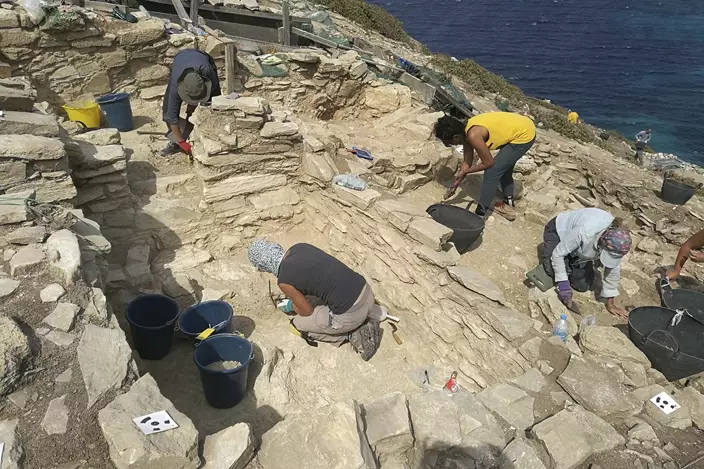
In this undated handout photo provided by the Greek Culture Ministry on Wednesday, Jan. 24, 2018, archaeologists work on Dhaskalio, off Keros island in the Aegean Sea, Greece. . (Greek Culture Ministry via AP)
"Almost every possible space on (Dhaskalio) was built on, giving the impression of a single large monument jutting out of the sea," the statement said, adding that the complex is the largest known at the time in the Cyclades island complex, which includes the top tourist destinations of Mykonos and Santorini.
More than 1,000 tons of marble were painstakingly shipped over from Naxos for the work.
Project co-director Michael Boyd of Cambridge University told The Associated Press that Dhaskalio appears to have been more than just an ordinary settlement.
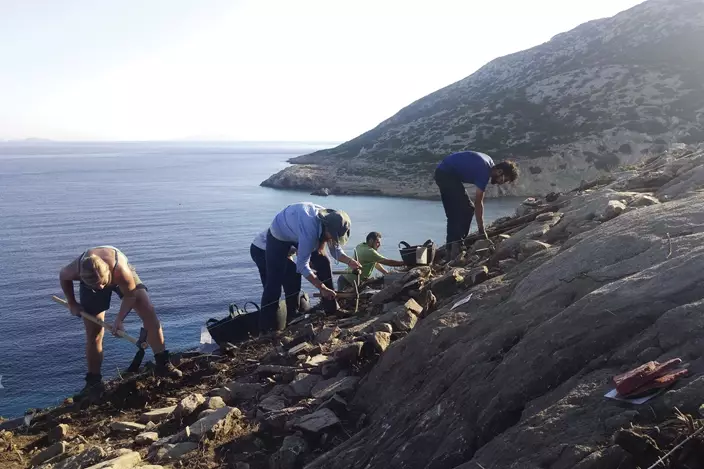
In this undated handout photo provided by the Greek Culture Ministry on Wednesday, Jan. 24, 2018, archaeologists work on Dhaskalio, off Keros island in the Aegean Sea, Greece. (Greek Culture Ministry via AP)
"It seems to us that it is a central place to which people are drawn, to which expertise and resources are being brought and where activities like the metalworking ... are being centralized and controlled," he said.
The joint British, Greek and Cypriot team found two metal-working workshops last summer on Dhaskalio, containing smelting debris and a stone mold for copper daggers — using ore imported from other islands.
Keros and Dhaskalio were inhabited between 2750-2300 B.C. The Cyclades were then home to a remarkable civilization of farmers, metalworkers and seafaring traders, best known for the stylized, flat-headed figurines made of white marble that inspired 20th-century artists such as Pablo Picasso and Henry Moore.
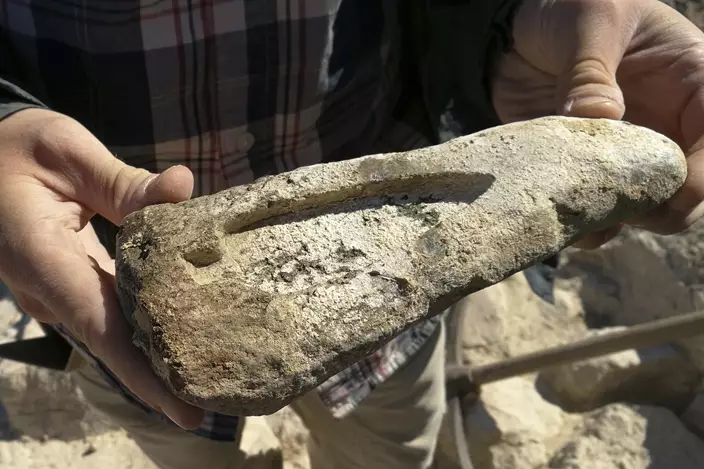
In this undated handout photo provided by the Greek Culture Ministry on Wednesday, Jan. 24, 2018, an archaeologist displays a metal mould for a copper spearhead, or dagger, found on Dhaskalio, off Keros island in the Aegean Sea, Greece. (Greek Culture Ministry via AP)
Oddly, more than half the surviving Cycladic figurines have been found on desolate Keros. Excavators think they were brought from across the archipelago and ritually smashed on the islet, home at the time to about half a dozen tiny settlements, at a sanctuary just opposite Dhaskalio.
That would make Keros the Aegean's earliest regional religious center, a precursor to nearby Delos that was later revered as the birthplace of Apollo, ancient Greek god of music and light.
Boyd said that while there's no answer to why Keros was initially chosen, the rituals were the first draw that brought everything else.
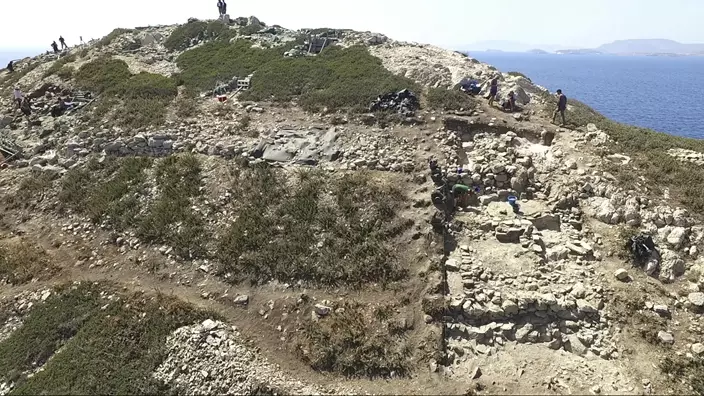
In this undated handout photo provided by the Greek Culture Ministry on Wednesday, Jan. 24, 2018, archaeologists work on Dhaskalio, off Keros island in the Aegean Sea, Greece. (Greek Culture Ministry via AP)
"All these other activities that we're talking about now (came) to be as important or eventually more important than the ritual activities," he said, adding that in early societies where only a few controlled the knowledge of metalworking, to others it would seem an almost supernatural skill.
"It involves fire, extreme heat, danger, and toxic fumes," he said. "It would have been quite a spectacle for people to watch so it does probably make sense that some of the smelting processes that we see on Keros were part of the ... public events that took place there."
LESBOS, Greece (AP) — Most drowned making the hazardous sea crossing from nearby Turkey, while others died of natural causes in migrant camps on the Greek island of Lesbos.
After years of neglect, a makeshift burial ground for migrants on the island has been cleaned up and landscaped to provide a dignified resting place for the dead, and for their relatives to visit.
Earth Medicine, the Lesbos-based charity that handled the project near the village of Kato Tritos, formally handed over the redesigned cemetery to municipal officials on Wednesday.
“We wanted it to be clear that this was a burial ground, (mostly) for people who died at sea — some of whom have been identified while others have not,” Earth Medicine spokesman Dimitris Patounis said. “It used to be just a field.”
For years, Lesbos has been a major destination for people seeking a better life in the European Union. They leave Turkish shores crammed into small, unseaworthy vessels provided by smuggling gangs. About 3,800 people have made the journey so far this year.
Before the intervention, the weed-choked graves were marked by a simple stone with a number written on it by marker, or, in the rare cases when it was available, a name. Currently, about 200 neat, uniform gray slabs filled with white gravel cover each grave, clearly listing whatever is known of the occupant.
“Now people will be able to visit when their (dead) relatives are identified,” Patounis said.
Officials stress that the burial ground is nondenominational, with recent inhumation services conducted by an Imam, a Greek Orthodox or a Catholic priest, according to the deceased's known beliefs.
“This was done with human dignity in mind, without any religious affiliation,” Patounis said.
The cemetery lies about a kilometer (½ mile) outside Kato Tritos in central Lesbos, around 20 kilometers (12 miles) from the island capital of Mytilini. Other migrants have been buried in the past in municipal cemeteries in other parts of the island, but this is the only burial ground specifically for migrants.
Follow AP’s coverage of global migration at https://apnews.com/hub/migration
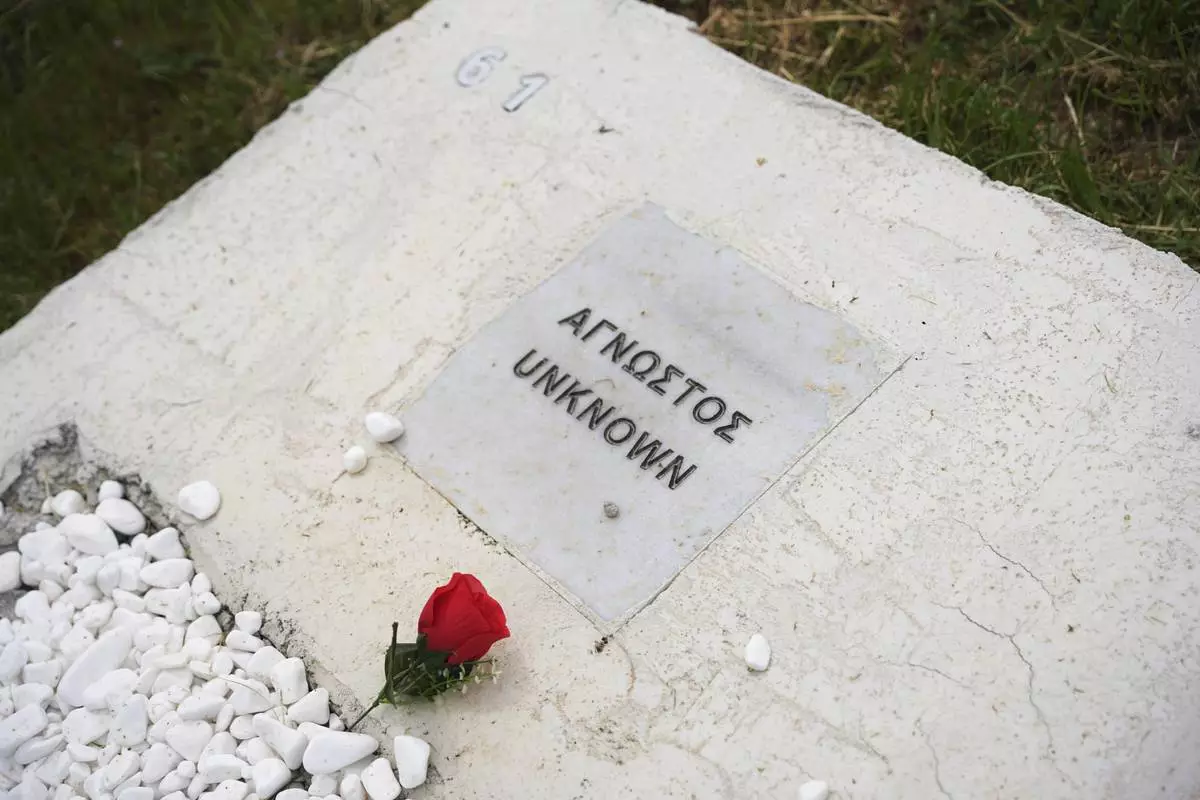
A grave of an unknown refugee is seen at the cemetery in Kato Tritos village on the northeastern Aegean Sea island of Lesbos, Greece, on Wednesday, April 17, 2024. After years of neglect, a primitive burial ground for refugees who died trying to reach Greece's island of Lesbos has been cleaned up and redesigned to provide a dignified resting place for the dead. (AP Photo/Panagiotis Balaskas)

A cemetery is seen from above at Kato Tritos village on the northeastern Aegean Sea island of Lesbos, Greece, on Wednesday, April 17, 2024. After years of neglect, a primitive burial ground for refugees who died trying to reach Greece's island of Lesbos has been cleaned up and redesigned to provide a dignified resting place for the dead. (AP Photo/Panagiotis Balaskas)
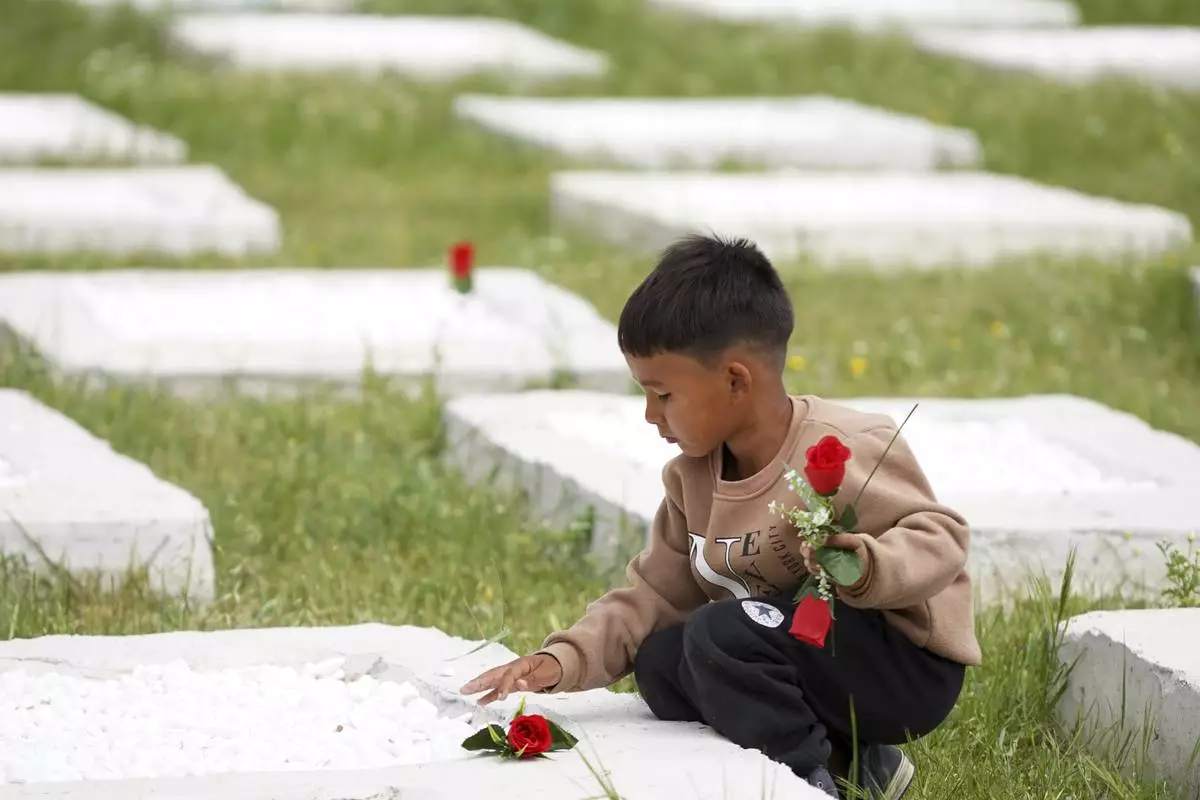
A boy lays flowers on a grave at the cemetery in Kato Tritos village on the northeastern Aegean Sea island of Lesbos, Greece, on Wednesday, April 17, 2024. After years of neglect, a primitive burial ground for refugees who died trying to reach Greece's island of Lesbos has been cleaned up and redesigned to provide a dignified resting place for the dead. (AP Photo/Panagiotis Balaskas)
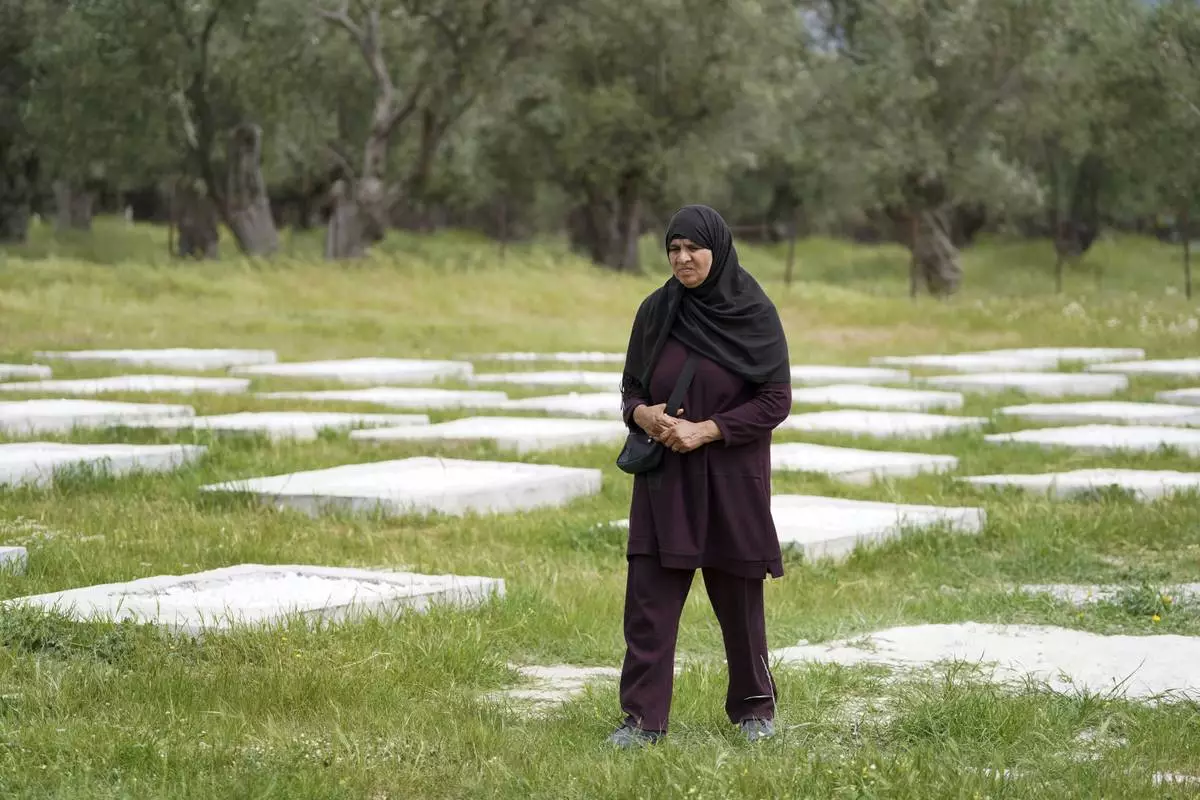
A woman walks at the cemetery in Kato Tritos village on the northeastern Aegean Sea island of Lesbos, Greece, on Wednesday, April 17, 2024. After years of neglect, a primitive burial ground for refugees who died trying to reach Greece's island of Lesbos has been cleaned up and redesigned to provide a dignified resting place for the dead. (AP Photo/Panagiotis Balaskas)
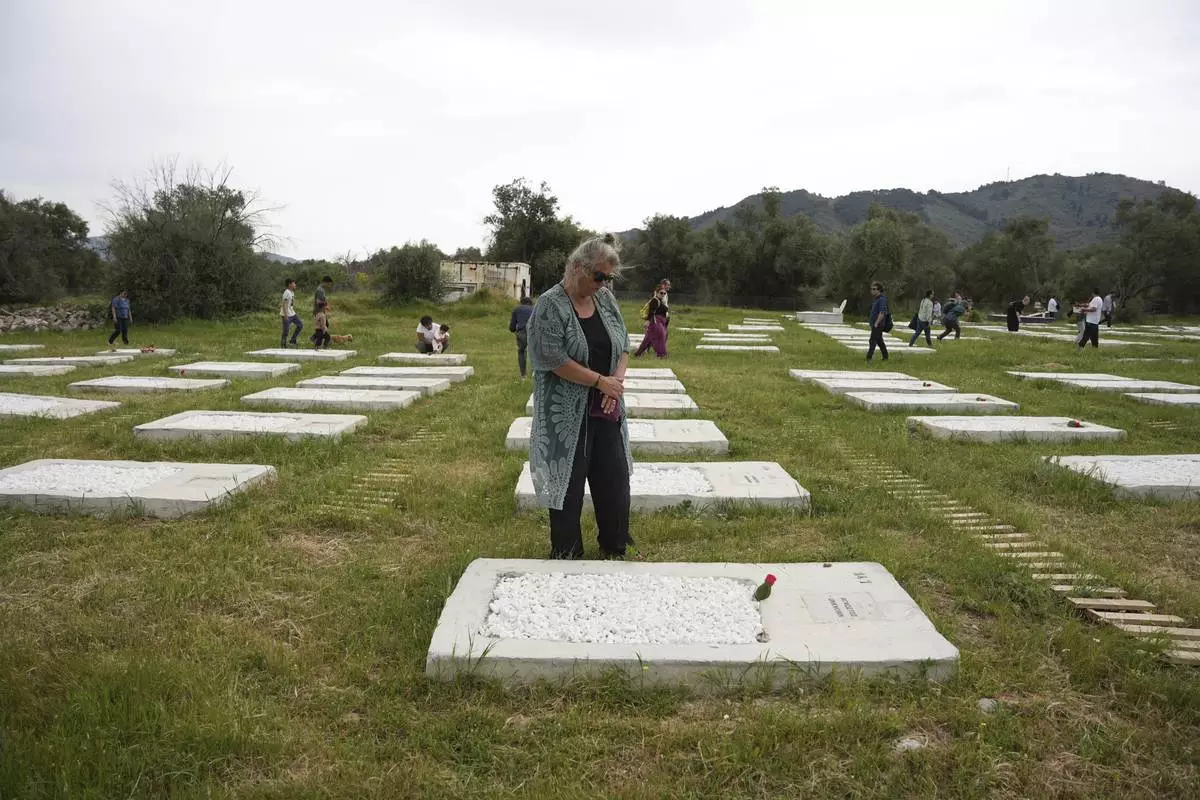
People visit the cemetery at Kato Tritos village on the northeastern Aegean Sea island of Lesbos, Greece, on Wednesday, April 17, 2024. After years of neglect, a primitive burial ground for refugees who died trying to reach Greece's island of Lesbos has been cleaned up and redesigned to provide a dignified resting place for the dead. (AP Photo/Panagiotis Balaskas)
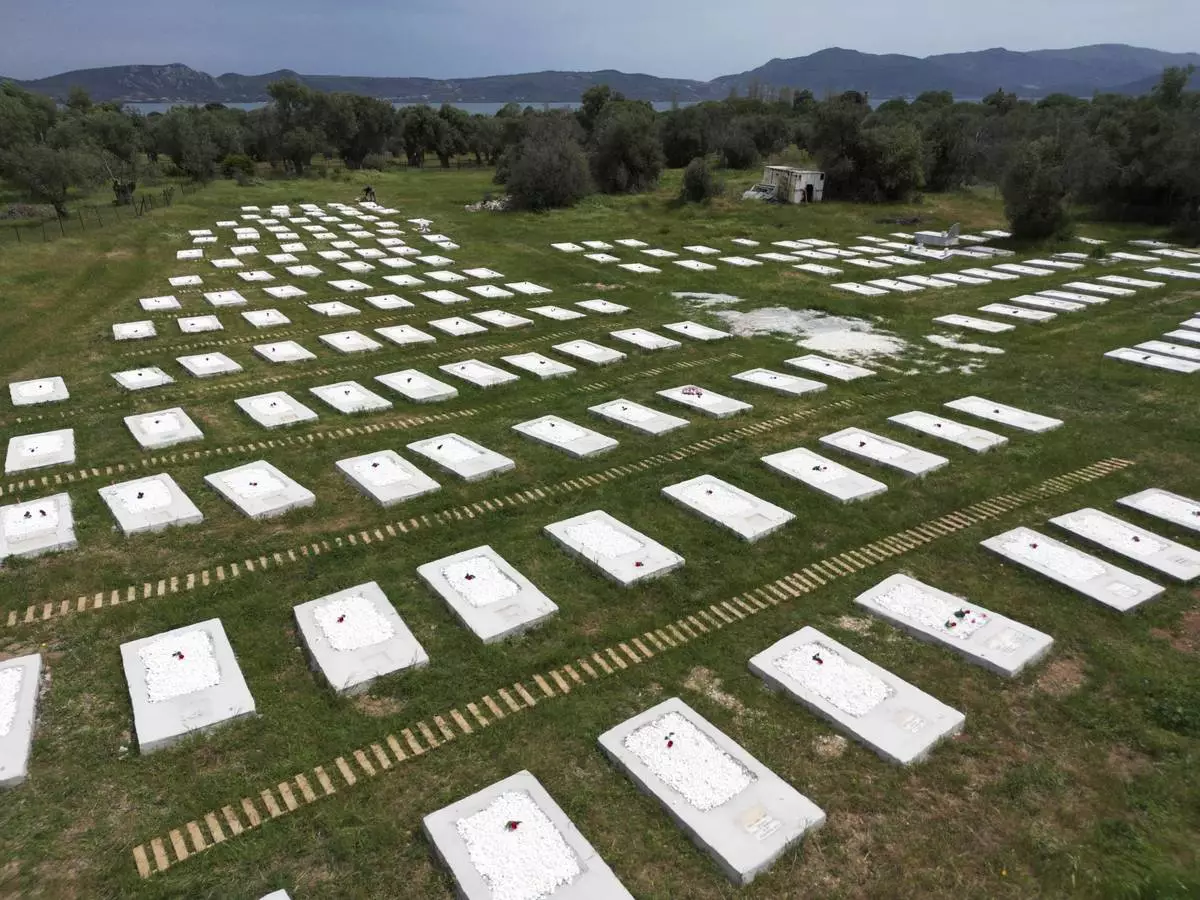
A cemetery is seen from above at Kato Tritos village on the northeastern Aegean Sea island of Lesbos, Greece, on Wednesday, April 17, 2024. After years of neglect, a primitive burial ground for refugees who died trying to reach Greece's island of Lesbos has been cleaned up and redesigned to provide a dignified resting place for the dead. (AP Photo/Panagiotis Balaskas)














